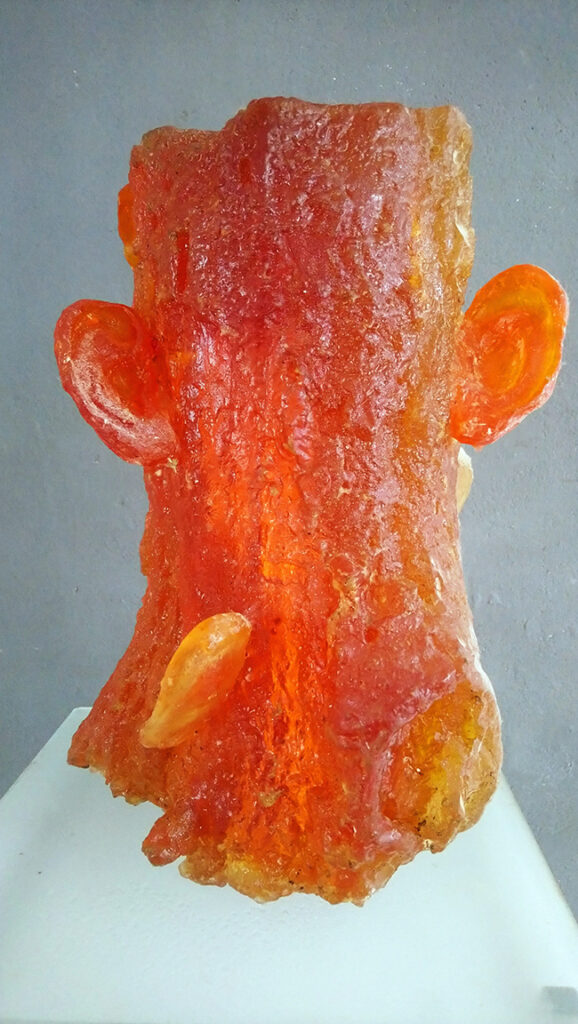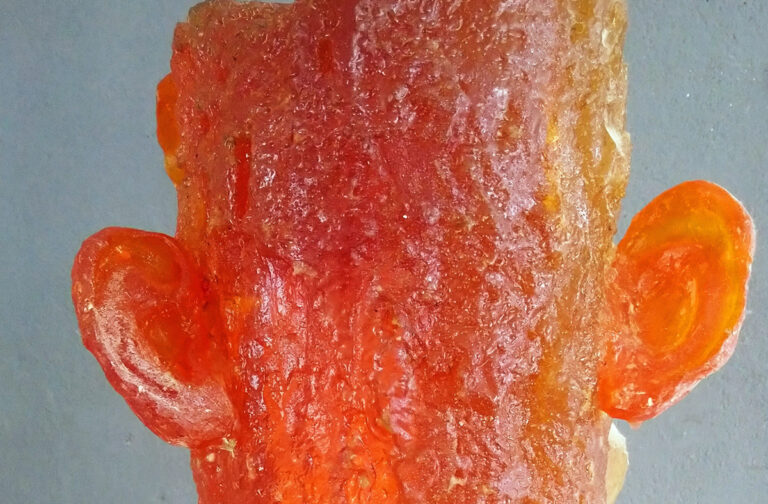Caroline Kampfraath, a Dutch artist, crafts intricate 3D art that blends diverse materials to convey her insights on life, nature, and society. Her work is characterized by the integration of unexpected objects like metal cans, bottles, and human forms, which serve as metaphors for our emotional and environmental experiences. Through her sculptures, she explores the ties between the physical and the symbolic, creating a layered dialogue about human existence.

One of her pieces, The Tentacles of the River, illustrates this approach. Kampfraath incorporates human lungs and jellyfish into the sculpture, using them to represent the fragile connection between life and nature. The lungs, a symbol of our breath and vitality, contrast with the ethereal nature of the jellyfish, highlighting the delicate balance we maintain with the natural world. Other elements, such as tree branches and kite wires, add layers of complexity, suggesting how our thoughts and emotions are intricately tied to our environment. While multifaceted, the work offers an optimistic view of interconnectedness between humans and nature.

Another of Kampfraath’s works, Inescapable, constructed from porcelain plaster and flax, delves into the idea of self-imprisonment and the challenge of accessing one’s true potential. The sculpture features a fox, symbolizing transformation and the shedding of old identities. Flax, a material traditionally associated with abundance, adds a symbolic layer of personal and creative growth. This installation invites viewers to reflect on their inner struggles and the ways they strive for progress and change in their lives.
Kampfraath frequently explores the fraught relationship between humanity and nature, as seen in her piece It’s All Hearsay Said the Tree. Made from a combination of natural and synthetic resin, this sculpture questions whether people truly hear the voice of nature or merely exploit it. The tree stands as a silent witness to human actions, symbolizing the delicate balance between harmony and destruction. This work, part of a series first exhibited at the Venice Biennale, challenges the viewer to consider their role in either respecting or exploiting the natural world.
In another sculpture, Dead Dogs Envelope, Kampfraath critiques the nature of modern communication. Using stainless steel and porcelain plaster, she presents a metaphor for the coldness and superficiality of digital interactions. The steel envelope represents the lifeless, unfeeling messages exchanged through texts and emails, while the “dead dogs” within symbolize the loss of emotion and loyalty in today’s instant communication. By contrasting these symbols, she prompts a reflection on how technology has affected our ability to truly connect with others.
Throughout her work, Kampfraath employs a variety of materials and themes to tell personal, social, and environmental stories. Each sculpture offers more than just a visual experience; it becomes a vessel for her reflections on the world and the way we relate to it. By transforming everyday objects into thought-provoking symbols, she invites viewers to engage in a deeper conversation about the complexities of life.
At its core, Kampfraath’s art is about connection—whether it’s our connection to nature, to one another, or to our own inner worlds. Each piece opens a door to explore these relationships, encouraging viewers to reflect on their own experiences and how they navigate the world. Her sculptures serve as a bridge between the tangible and the abstract, offering a meaningful exploration of human connection, progress, and the ever-changing dynamics of our place in the world.

